Tatar's honeysuckle is a real find for a person who looks for a beautiful, but not a capricious plant for decorating its homeland territory. The natural range of shrub is quite modest: the wild honeys can be found in China, Central Asia, as well as on the lands that will be banned from the western part of Kazakhstan to the Volga. But an indulgeted shrub knows all over the world. About the features of planting and leaving the plant read in the article.
The desired guest in the household sections of many gardeners, the decorative honeysuckle Tatarskaya became not by chance. The popularity of the plant can be explained by its natural resistance to various adverse environmental factors. Shrub perfectly copes with drought, shadow, contaminated air and salted soil, while some other representatives of the plant world simply die from one or a set of several factors. The honeysuckle boasts other advantages attractive to gardeners: rapid growth and almost instant adaptability after a transplant. Among the shortcomings of the bush, we note its special vulnerability to the pathogens of viral diseases. When the honeysuckle strikes one of these diseases, the bush is covered by strange balls, which nicknamed "width brooms."
Honey Tatar: Quick description
In the garden, where Tatar honeysuckle grows, you will see stable tall (up to 4 m) shrubs framed by lush crowns of leaves. The front side of each ovoid leaf is dark green, and the wrong is sisaya. The branches of the honeysuckle inside the hollow, and outside are smelted with gray bark. Young shoots marked with dark spots of leisheries, have a gray-brown color.
The honeysuckle flowers exuded easily tangible sweet scent, and their color is determined by the plant variety: the color is white, light pink and rich pink. The shrub is abundantly and longly blooms for a month (from May to June). In July, the first honeysuckle fruits appear - bright red or yellow pair or single berries with a diameter of 0.5 - 0, 5 cm. They are characterized by a bitter taste and to some degree of poisonous, to eat them, accordingly, it is impossible. Fruption continues all August. Abundantly bloom and fruit begins a bush, which has reached the age of 3 - 4 years.
During the period of vegetative growth, the honeysuckle Tatar has a highly decorative appearance, so it can be seen in the territory of many Botanical gardens of Russia. Another indisputable "plus" of this plant is its durability - some species celebrate their 100th anniversary. With proper care, the Tatar honeysuckle becomes a full-fledged "adult" shrubs after 10-15 years after landing.
Popular Sorts of Honey Tatar
Today, gardeners are happy to pay their attention to several beautiful varieties of plants.
Tatar honeysuckle: Rosea variety
This is an elegant shrub, in shape resembling a pyramid. Representatives of the grade growing in the Moscow region form buds at the end of May and bloom within the next 2 weeks. From afar, the honeysuckle Tatar Rosea is easy to confuse with a miniature peach tree, covered with flowers. Flowers petals have a rich pink color, while the color of pink buds is more saturated and deep. Flowers are quite large (about 2 cm in diameter), five-package.
Lilac, irises and peonies bloom at the same time as the honeysuckle Tatar Rosea. Many gardeners skillfully use this moment for a spectacular decoration of their garden. Flowering plants become an excellent material for creating a variety of compositions within decorative gardening.
When flowering is completed, the bush covers a lot of beautiful round berries of the orange color. Despite their attractiveness, they are not suitable for food.
The honeysuckle of the Tatarskaya of this variety copes well with shading, easily adapts to any soil, and also perceives trimming, transplanting and cutting crown. It is not difficult to propagate with green cuttings.
Honey Tatar: Hack Red Grade
The waxed bush pleases the eye with his bloom from the end of spring to the second half of June. The colors of this variety attract the attention of a rich dark purple color, which emphasizes the buds of the dense-pink color. Hack Red is very beautifully blooming - looking at the bush from afar, you might think that his wobbling is a weightless foam pink flower. Flowers appear in mid-May and decorate the bush to the first decade of June. The plant does not lose its decorativeness and after flowering when dark red fruits become its main decoration.
Among especially attractive varieties should not be noted gradiflora and alba varieties, which each spring dress up in a fragrant dress made of white flowers. Hinesity Amold Red, Orange, Punica disseminate beautiful red flowers on a dark green lifestyle, and elegans grade flower petals are amazing with an amazing pattern - red background dissect pinkish strips.
Despite the resistance to shading, all the types of Tatar honeysuckle are still preferred to develop and abundantly blossom in areas heated by the Sun. The decorative quality of the shrub decreases somewhat if the honeysuckle is in the shade.
Tatar honeysuckle: landing and reproduction
In the garden, the honeysuckle Tatar will grow well and look with themselves like - other decorative bushes and perennials. However, the natural attractiveness of the plant allows you to use it for a single landing, for example, as a living hedge.
All Tatar honeysuckle varieties can be multiplied by several ways. All of them are well known to gardeners:
- drawing;
- with the help of a gag;
- through a young piglet;
- from seeds.
The shower of the honeysuckle has two options: it can be done in summer, taking advantage of young shoots, or with the onset of cold weather with the help of obsessive cuttings. To do this, they need to cut them off at the beginning of winter and keep in touch until the coming of spring heat. In order for the drawing to be successful, selecting healthy strong shoots of the current year, cut them on a part of 10 - 12 cm long. On each fragment there should be 2 nodes and 1 interstitial. The cuttings are also suitable and with the so-called "heel" - they remain after lambing from last year's branches.
So that the cuttings have been successfully sprouted, the substrate from sand and peat is chosen as a nutrient material. Before planting on the cuttings, a special substance is applied, stimulating the growth of the roots, or heteroacexin, after which the twigs are put in a box for seedlings at an angle of 45 0. From above, the seedlings are covered with a cut of a dense film, which will create special microclimatic conditions in the greenhouse. Now you need to wait for the appearance of firstborn leaves.
When this happens, the drawers with a future shrub cover the bag so that they do not destroy the winter sizzle. In the spring, the cuttings are sent to the permanent place of "residence". The transplant is beginning when there will be a steady plus temperature on the street. If all the conditions of the plant deemed suitable, then his blooming young bush will delight the owner for the next year.
The following method of reproduction of honeysuckle gardeners also use quite often. You can quickly get the inheritance from an adult mother bush using some of his branches. Bushes that have reached 3 - 4 years are suitable for reproduction. Part of each tank is added to the ground. In summer, the twig should be rooted, but it is recommended to separate it from the main bush for transplanting with the arrival of the next spring.
Growing the honeysuckle from seeds is a rather time consuming and long process. It should be noted that a shrub grown from seeds is deprived of the varietal signs of the parent plant. That is why experts advise breeding bushes vegetatively.
Honey Tatar: Care
The soil for the successful development and growth of the honeysuckle of Tatar should be in the measure of loose and have a good drainage. Excessively heated by the sun, dried areas, as well as lowlands, where a certain amount of moisture remains, the shrub will not appreciate.
The seat for the honeysuckle must be filled with a special mixture of parts of which serve river sand, peat (or humid) and nervous land. All components are taken at the rate of 1: 1: 3. The pits of the pit rip the drainage layer with a thickness of at least 5 cm. In the illegal moisture soil, as well as in the scarce sand substrate, the honeysuckle Tatarskaya never takes. The most suitable acidity of the soil varies from 7.5 to 8.5.
Despite such nuances, the honeysuckle Tatar gardeners unanimously recognized as an unpretentious culture. A small bush can easily turn into a beautiful blooming shrub and without regular care, however, the favorable cultivation conditions, of course, significantly increase the decorative quality of the plant and directly affect its ability to bloom. A set of agrotechnical procedures for Tatar honeysuckle Standard: The plant needs regular feeding, cropping, mulching, prevention from malicious plants and insect attacks and various viral diseases.
With the arrival of the first spring month of the soil, where the honeysuckle Tatarskaya grows, enriched with nitrogen-containing fertilizer (20 - 30 g / m 2). The complex feeding of the plant is relevant immediately before its flowering (for example, it is possible to use the Kemira-Universal tool, the diverse of 20 g of substance in the water bucket). In the fall, pumping the soil, do not forget to make some amount of wood ash (on average 200g / m).
For one season, the honeysuckle shrub should get 2 - 3 abundant irrigation. In especially hot summer days, each bush needs about 10 liters of water. You should not forget that the soil around the honeysuckle of Tatar needs regular loosening (they do it to a depth of 15 - 20 cm), and the priority circles - in mulching. The latter procedure is carried out annually in the fall - so the mulching layer will serve as a reliable protection of the root system of the plant in the period of frost without snow. In the spring it will hold the soil moisture.
Transform a shrub through trimming is needed late in the fall, when the leavefall is completed. However, this procedure can be postponed until spring, when the kidneys begin to bloom. The "elderly" bushes look good, subject to careful thinning 1 time in 2 - 3 years. Old, strongly developed and weak shoots are removed, following not less than 5 healthy and strong trunks in the shrub.
The honeysuckle Tatar, which reached the 6th age, requires special attention of the owner, since it requires regular sanitary trimming, as a result of which dry, damaged and sick branches will be removed, the shoots of the lower tier, falling on the ground and prevent plant care.
The climatic conditions of the middle strip allow the honeysuckle of Tatar to overreim without special shelter. In rare cases, the frost can touch the tips of the branches, but this does not affect the degree of decorativeness of the whole shrub.
We offer you a video about the peculiarities of the care of the honeysuckle.
‘]
Diseases and pests of the honeysuckle of Tatar
Insect pests are capable of annoying a plant. Most of the whole bushes of the honeysuckle suffer from a housing age. Fight with their victim with natural and synthetic insecticides. As natural weapons, garlic, tobacco, pepper tincture. Among the artificial means the most popular and effective are Aktellik and Aktara.
Significant harm and appearance of plants can be applied ticks, shields, falcifers, as well as various insects, damaging leaves (caterpillars, spiders, etc.). And this, unfortunately, not all the problems that the gardener growing, growing the honeysuckle Tatarskaya on his pre-site. A shrub can be an affordable target for destructive activities fungus (spottedness, mildew, for example) and viruses (mosaics).
The high vulnerability pathogenic microorganisms is perhaps the only drawback that can be attributed to Tatar honeysuckle. With the extensive distribution of signs of illness, the shrub dies completely. If the defeat is partial, for the plant it is worth fighting, using fungicides and insuclear acaricides to destroy the pests. We also note that an absolutely healthy shrub is likely to stand in front of probable danger, therefore competent care and care for the honeysuckle should be at the gardener in priority.

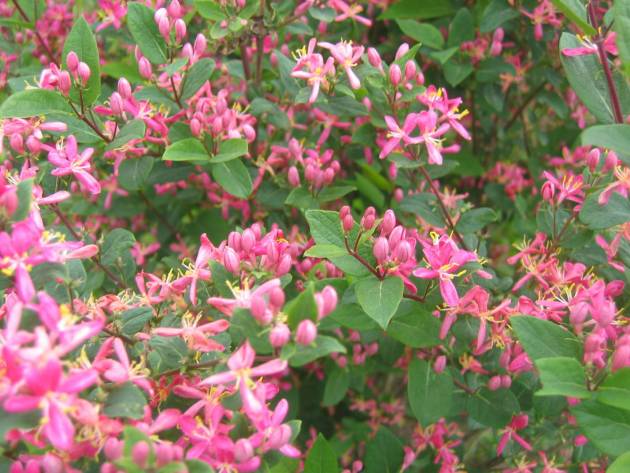
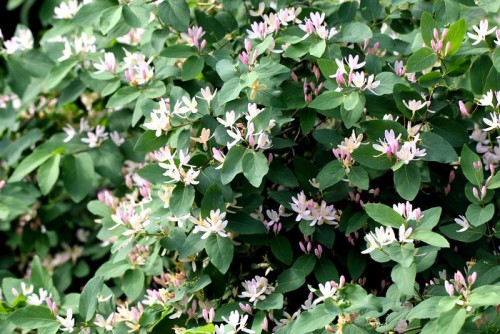
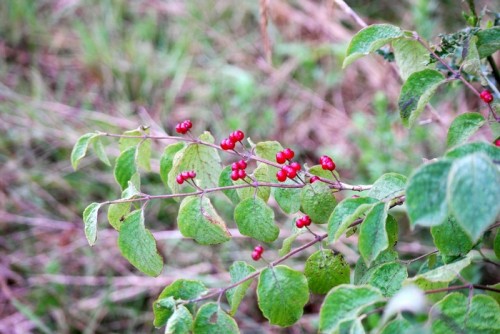
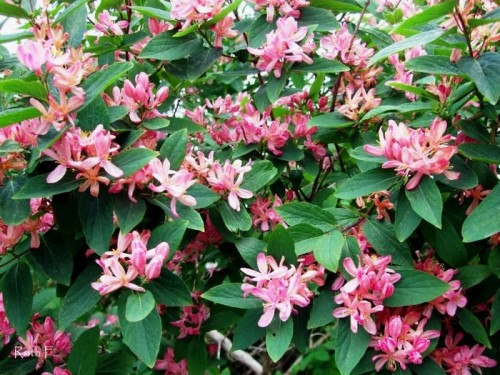
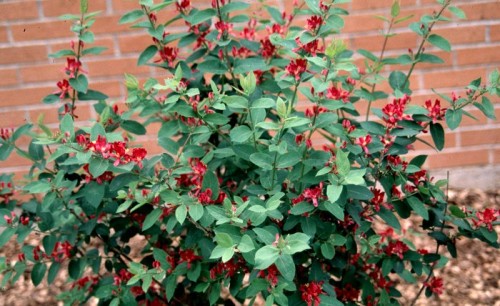
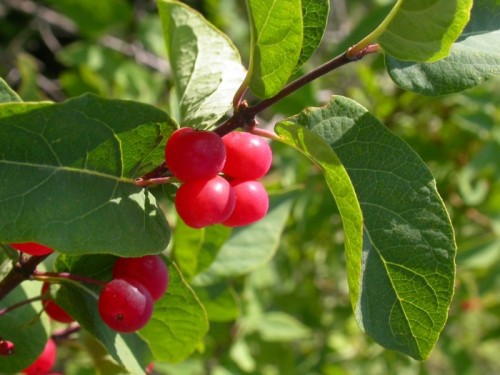
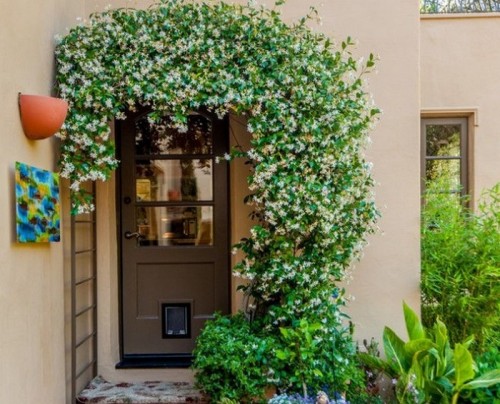
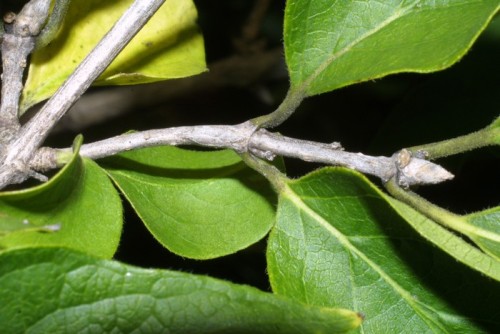
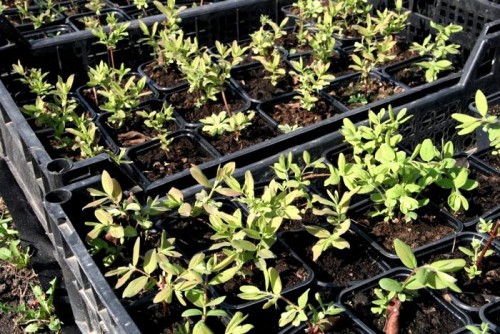
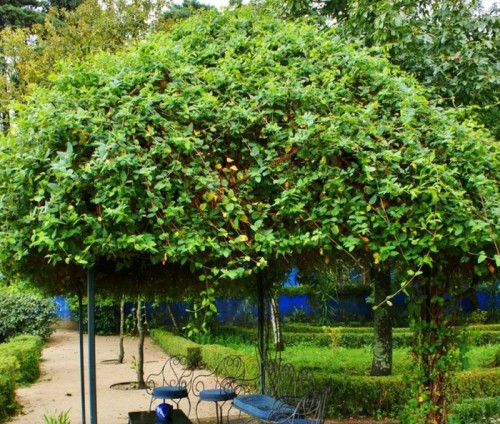
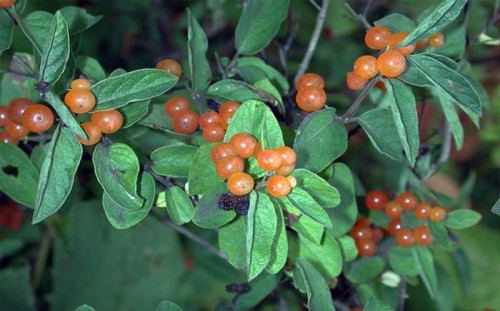
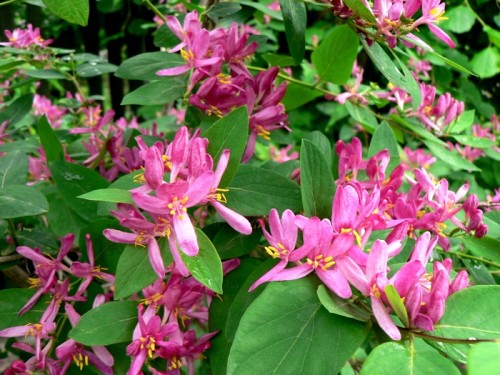
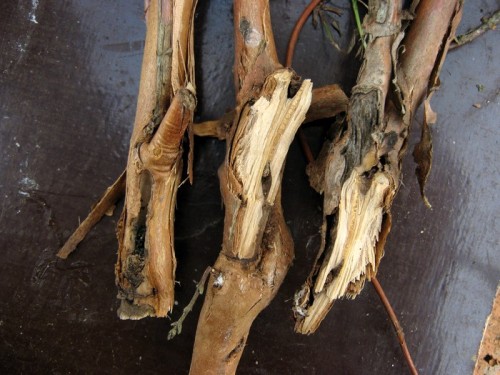
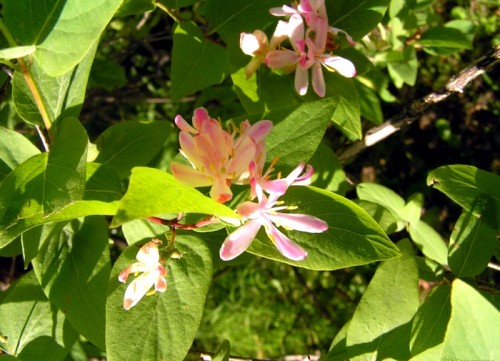
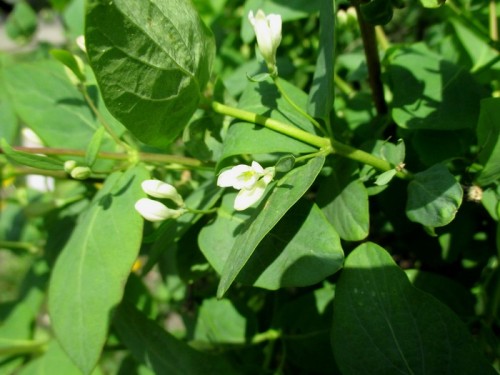
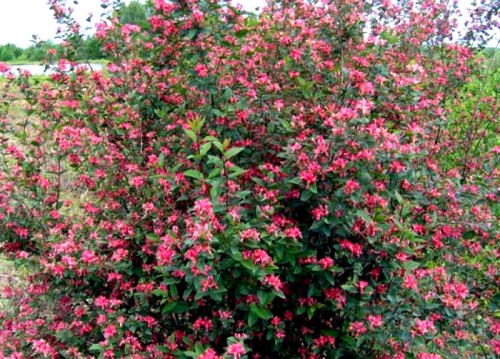












 Start a discussion ...
Start a discussion ...